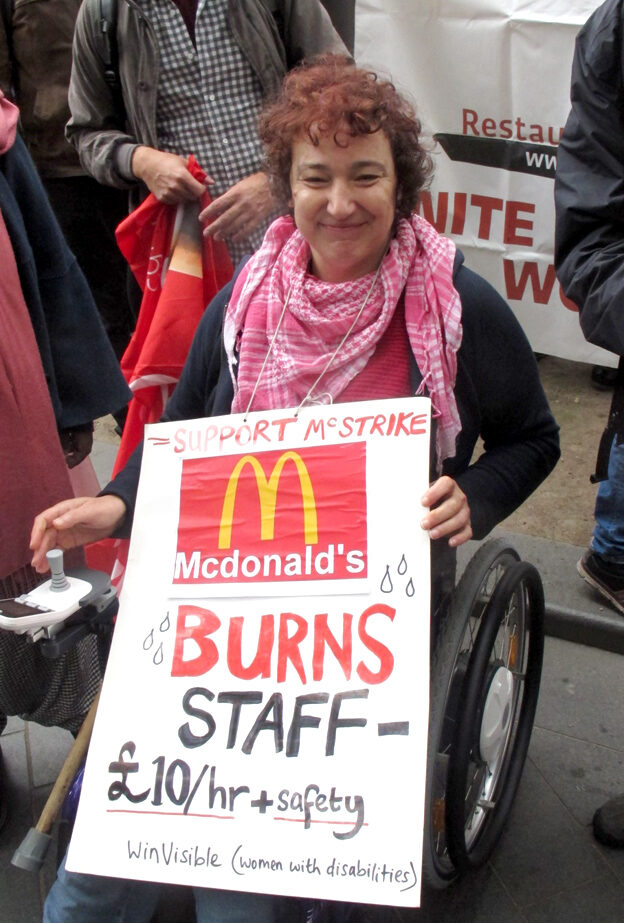THE MAJORITY of gig economy workers are injured at work and suffer from sprains, cuts that require stitches, and even fractures and broken bones.
According to a survey by OnePoll of 1,000 gig economy workers, 85% of the 59% injured were unable to work for an average of five weeks.
However, 60% claimed that this was unpaid, admitting that more than one in ten should have taken time off, but didn’t.
It was also found that the average gig economy worker has only enough savings to last five weeks without work.
And nearly one in ten have less than a week’s worth of savings put aside.
In addition, hired workers have enough savings to last on average nearly seven weeks, even if they lose their income.
Anthony Beilin, CEO of Collective Benefits, a provider of insurance and benefits for independent workers, said: ‘The results of this survey are a wake-up call.
‘It is simply unacceptable that many of the people we rely on to care for our loved ones and deliver medicines, sachets and food are at significantly increased risk.
‘They are more likely to suffer physical injuries, but if they do, they are less likely to be protected and have less personal savings to overcome the financial shocks that occur.
‘This is an unsustainable situation for workers and the gig economy companies that depend on them.
‘Being an independent worker in the gig economy should not affect the availability of support that most of us take for granted if you are sick, injured, or at home with a new child. Financial support if you need it, or access to high quality mental health support if you need to talk to someone.
‘These are general needs and do not depend on the type of employment.’
The study also found that more than one-third (36%) of gig economy workers feel they can’t take time off from work when they’re sick because they can’t afford to miss their wages.
Also, 34% of gig economy workers continued to address mental health issues, and 32% suffered from bereaved families and were unable to take holidays.
It was also found that 33% felt that work, wages and financial instability led to mental health problems and stress.
The study, commissioned through OnePoll, also found that the main reason gig economy workers choose a platform is the flexibility of working hours, times and places. This is more important than high wages.
In addition, 84% of gig economy workers feel that their work fits well or very well with non-work family and social responsibilities.
The most common injuries suffered by gig economy workers at work are:
1. Bruising
2. Cut – No stitch
3. Fracture
4. Sprain
5. Eye injury
6. Cut – stitch required
7. Concussion
8. Internal injury
- A recent Unison report highlights the effect of the gig economy on health and safety, and includes the following:
Information and training
Workers on temporary/casual contracts often miss out on basic health and safety training and information. Sometimes this is due to:
- the hours staff work, including the unsocial shifts and rotas that are most difficult to fill
- employers not thinking it worth their while.
Whatever the reason, employers must provide clear instructions, information, and adequate training for all those working on their premises. Failing to do so is a breach of the law, for which they could be prosecuted.
Lone working
Where staff are working alone, the risks of any hazard are increased. This is because they could be unable, or could find it harder, to get support should they get injured or run into difficulties. In the case of workers on casual or zero-hours contract the risks are even further magnified as they often don’t get, or find it harder to access, the support other workers receive.
Case study
Liz was a care worker for an agency who had been given an assignment working at a local nursing home. She was caring for older patients with varying degrees of mobility and other health issues such as dementia. As part of this assignment she was required to lift a patient into a bath, using the hoist provided. However, the patient became confused while she was being lifted, started to struggle, and slipped from the sling. Liz managed to break the patient’s fall but only at the expense of sustaining a back injury for which she was off work for a month. As Liz had earned less than £113 per week from that particular employer, she did not even receive statutory sick pay.
Aches, pains and strains or musculoskeletal
disorders (MSDs)
MSDs, along with stress, are a leading cause of occupational ill health – accounting for 39% of all cases (HSE). MSDs, whether they occur because of standing or sitting for too long, carrying/lifting/doing too much or too often, are usually caused by a failure to adapt work to the needs of the worker, and once again it is the needs of gig economy workers that are so often overlooked.
Hazardous substances
Virtually all workplaces contain hazardous substances. These can vary and include:
- highly explosive or toxic chemicals in a laboratory
- medicines or biological agents in a hospital or nursing home
- everyday cleaning agents, such as bleach
- photocopying toner in an office.
Case study
Jean, a temporary cleaner employed through an agency, was employed to work for a large NHS acute trust. Although an experienced cleaner she had not worked in the NHS before. She was asked to deep clean an operating room using a chlorine containing substance. The room was poorly ventilated and although a face mask was provided, it didn’t fit properly. The data sheet was missing, and when she mixed the substance with hot water, she started to develop breathing difficulties and nearly passed out. Although she later made a full recovery, she had to take the remainder of the day off.
